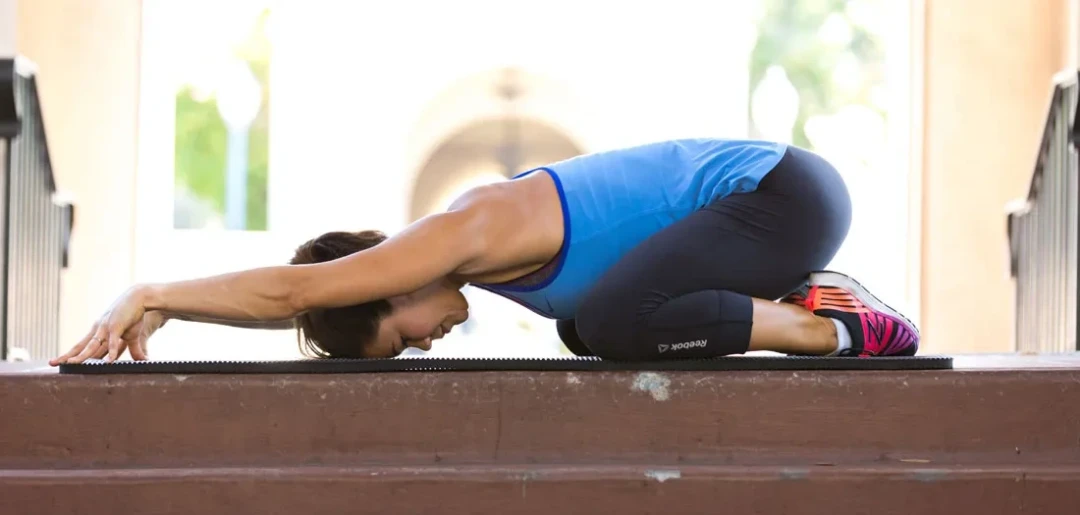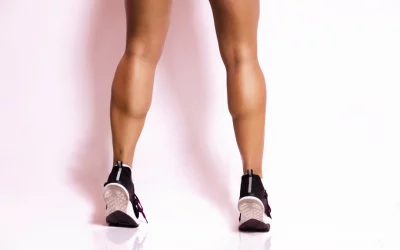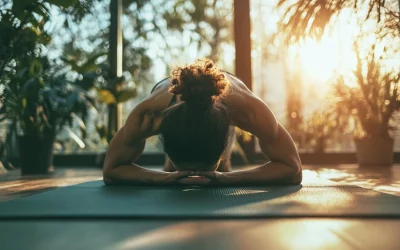Tight triceps can put the brakes on your range of motion and leave your arms feeling stiff and sore—whether it’s after an intense workout or a long, desk-bound day. Stretching them the right way isn’t just about improving flexibility; it’s also a cornerstone for faster muscle recovery and long-term arm health. But beware: doing it incorrectly can turn a good intention into discomfort or even injury.
In this article, we’ll guide you through the best practices for stretching your triceps—safely, effectively, and with maximum benefits. Get ready to give your arms the relief they deserve.
Benefits of Stretching the Triceps
Stretching the triceps improves physical well-being and mobility by enhancing flexibility and preventing injuries. As key muscles for elbow extension and shoulder stabilization, maintaining their flexibility supports an active and healthy lifestyle.
Regular triceps stretching increases arm and shoulder flexibility, making activities like lifting and reaching more fluid while reducing tension and stiffness. It also promotes muscle recovery by boosting blood flow, delivering oxygen and nutrients, and preventing soreness or overuse injuries such as tendonitis.
Additionally, triceps stretching improves posture by engaging the shoulders and upper back, relieving tension from poor alignment or extended sitting. It fosters mental relaxation through controlled breathing, reducing stress and promoting overall physical and mental well-being.
“Since I started focusing on triceps stretches, I’ve noticed how much easier everyday tasks like lifting groceries or reaching high shelves have become.”
Effective Triceps Stretches for Flexibility and Recovery
 1. Overhead Triceps Stretch
1. Overhead Triceps Stretch
The Overhead Triceps Stretch is a foundational exercise for enhancing triceps flexibility and improving upper arm mobility.
Benefits of the Overhead Triceps Stretch:
-
Enhances Shoulder Mobility: Improves the flexibility of the long head of the triceps, which aids in movements like overhead pressing and throwing.
-
Supports Muscle Recovery: Promotes blood flow, helping to alleviate tightness and speed up recovery after physical activity.
-
Reduces Injury Risk: Increases mobility and prevents stiffness, reducing the likelihood of strain or shoulder-related injuries.
-
Highly Accessible: Requires no equipment and can be performed in any setting, making it suitable for all fitness levels.
How to Perform the Overhead Triceps Stretch:
-
Stand or sit with your back straight and feet positioned hip-width apart.
-
Raise one arm overhead, keeping it close to your ear.
-
Bend the elbow, moving your hand behind your head toward the middle of your upper back.
-
Use your opposite hand to gently press the raised elbow downward, applying light pressure.
-
Maintain proper form by keeping your back straight and avoiding leaning or arching.
2. Cross-Body Triceps Stretch
The Cross-Body Triceps Stretch requires no equipment and can be performed almost anywhere, making it a practical addition to any routine.
Benefits of the Cross-Body Triceps Stretch:
-
Enhances Upper Arm Mobility: Improves flexibility in the triceps, shoulders, and upper back, aiding daily activities and athletic performance.
-
Relieves Muscle Tension: Reduces tightness in the upper body, especially after workouts or prolonged inactivity.
-
Highly Accessible: Can be performed by anyone, regardless of fitness level, without the need for special equipment.
How to Perform the Cross-Body Triceps Stretch:
-
Extend one arm across your chest, keeping it straight or slightly bent.
-
Use your opposite hand to grasp the extended arm just above the elbow.
-
Gently pull the arm closer to your chest, feeling the stretch in the back of your upper arm.
-
Relax your shoulders and avoid twisting your torso.
3. Behind-the-Back Triceps Stretch
The Behind-the-Back Triceps Stretch is an effective way to deeply target the triceps and improve shoulder mobility.
Benefits of the Behind-the-Back Triceps Stretch:
-
Improves Shoulder Mobility: Engages the long head of the triceps, supporting movements like lifting and throwing.
-
Relieves Muscle Tightness: Alleviates tension in the triceps and upper arms after physical activity or prolonged arm inactivity.
-
Supports Upper Body Flexibility: Indirectly targets the shoulders, lats, and chest for better overall mobility.
How to Perform the Behind-the-Back Triceps Stretch:
-
Stand with your feet shoulder-width apart and maintain a neutral spine.
-
Reach one arm behind your back, bending the elbow so your hand moves toward your upper back.
-
Use your other hand to reach behind and clasp the wrist or fingers of the bent arm.
-
Gently pull downward to create a stretch in the triceps of the bent arm.
4. Seated Overhead Triceps Stretch
![]() The Seated Overhead Triceps Stretch is a variation of the traditional overhead stretch, providing added stability for individuals at any fitness level.
The Seated Overhead Triceps Stretch is a variation of the traditional overhead stretch, providing added stability for individuals at any fitness level.
Benefits of the Seated Overhead Triceps Stretch:
-
Promotes Stability: The seated position offers greater control and reduces the risk of losing balance.
-
Encourages Proper Posture: Helps maintain alignment, making the stretch more effective and safe.
-
Improves Mobility: Targets the triceps and supports a better range of motion in the upper body.
How to Perform the Seated Overhead Triceps Stretch:
-
Sit on a sturdy chair or flat surface with your back straight and feet flat on the floor.
-
Raise one arm overhead, fully extending it.
-
Bend your elbow so your hand moves behind your head toward your shoulder blades.
-
Use your opposite hand to gently push the raised elbow downward, deepening the stretch.
5. Child’s Pose with Triceps Stretch (Yoga Pose)
The Child’s Pose with Triceps Stretch combines a yoga posture with a targeted stretch, enhancing both physical flexibility and mental relaxation. It is ideal for releasing tension in the triceps, shoulders, and upper back while promoting calmness.
Benefits of the Child’s Pose with Triceps Stretch:
-
Improves Flexibility: Lengthens the triceps, aiding elbow and shoulder range of motion.
-
Releases Upper Body Tension: Alleviates stress in the shoulders, upper back, and arms.
-
Encourages Relaxation: Combines stretching with mindfulness, promoting mental calm.
How to Perform the Child’s Pose with Triceps Stretch:
-
Begin in a kneeling position on the floor, lowering your hips back toward your heels.
-
Extend your arms forward on the ground, palms facing down, in the traditional Child’s Pose.
-
Bend one elbow, bringing your hand behind your head toward your upper back.
-
Use your opposite hand to gently press on the raised elbow, deepening the stretch in your triceps.
Consistency and proper technique are essential for maximizing the benefits of triceps stretches, and guided routines can make maintaining a regular practice much easier. WeStretch offers expert guidance and tailored programs to help you incorporate effective stretches into your daily routine, improving flexibility, recovery, and overall mobility.
Tips for Effective Triceps Stretching
To stretch your triceps effectively and safely, start with a proper warm-up. Spend 5–10 minutes on light activities like brisk walking or jumping jacks to increase blood flow and prepare your muscles for stretching, reducing the risk of strain. Skipping this crucial step can make your triceps more susceptible to injury.
Focus on proper form and alignment during each stretch, ensuring your body is positioned correctly and moving intentionally. Hold each stretch for 15–30 seconds, allowing your muscles to elongate gradually for better flexibility. Incorporate controlled breathing, inhaling deeply before the stretch and exhaling as you ease into it, to encourage relaxation and deeper stretches.
Always listen to your body—stretching should cause mild tension, not pain. Avoid overstretching or pushing through discomfort, as this can lead to injury. By warming up, maintaining proper technique, and practicing mindfulness, you can effectively improve triceps flexibility, reduce tension, and enhance recovery.
Exercise Smarter with WeStretch: Your All-in-One Stretching Assistant
A consistent full-body stretching routine is essential for improving flexibility, supporting injury prevention, and enhancing overall well-being. Carefully following simple yet effective stretches targeting the hamstrings, hip flexors, back, quads, chest, and shoulders, individuals of any fitness level can reap the benefits.
Regular stretching, with attention to proper form and consistency, can help you move more freely, recover faster, and feel better in everyday activities.
Looking for a way to add some fun to your stretching routine? Check out WeStretch—an app that’s like your own personal stretch coach! With tailored plans, easy-to-follow demos, and progress tracking, it’s got everything you need to keep you limber and on point. Ready to get flexible? Sign up today and let’s get stretching!
 FAQ
FAQ
How do you release tight triceps?
Start with a warm-up, perform stretches like the overhead triceps stretch, use foam rolling, and maintain consistency to improve flexibility and relieve tension.
Should you stretch sore triceps?
Yes, gently stretch sore triceps to improve flexibility, promote recovery, and avoid strain, while prioritizing rest if soreness is severe.
How to relieve sore triceps?
Use gentle stretches, apply heat or cold, try foam rolling or massage, stay hydrated, and allow rest to reduce soreness and improve recovery.
What is the best tricep stretch?
The overhead tricep stretch is highly effective for targeting triceps, promoting flexibility, and aiding recovery when done gently and safely.
How often should I stretch my triceps?
Stretch triceps 2-3 times a week or daily if needed, ensuring stretches are gentle, consistent, and balanced with recovery.






